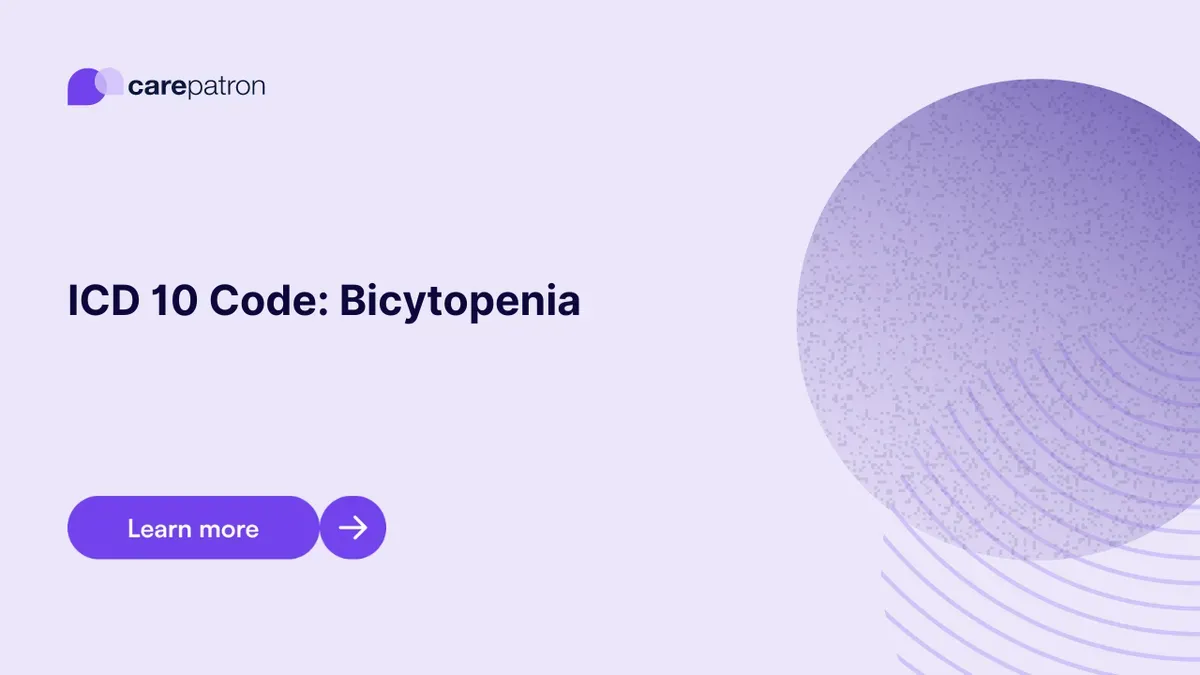
Bicytopenia ICD-10-CM Codes
Explore the key ICD-10 codes used for diagnosing and treating Bicytopenia, a blood disorder affecting two types of blood cells. Learn more today.
Use Code
Commonly asked questions
Bicytopenia ICD codes are used when documenting a medical diagnosis of bicytopenia for billing and clinical records.
Treatments may include medications, blood transfusions, or bone marrow transplantation, depending on the underlying cause and severity.
A diagnosis code for Bicytopenia indicates that the patient has deficiencies in two types of blood cells. It helps in accurate clinical documentation and billing.
EHR and practice management software
Get started for free
*No credit card required
Free
$0/usd
Unlimited clients
Telehealth
1GB of storage
Client portal text
Automated billing and online payments
